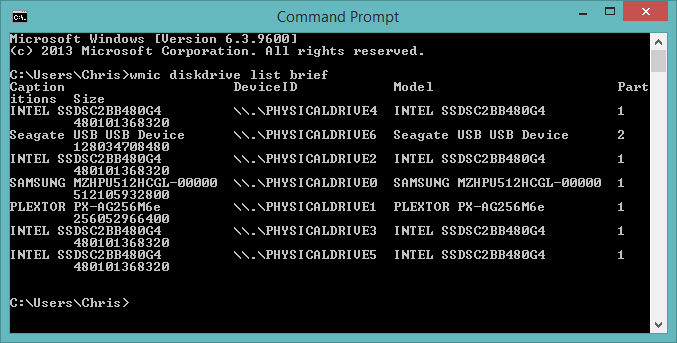A 1400 MB/s SSD: ASRock's Z97 Extreme6 And Samsung's XP941
Z97 ushers in new and exciting ways to attach and use storage devices. With support for M.2 PCIe and SATA Express, two sides of the same SSD coin, Z97 improves on Z87. But not everywhere. AsRock add to Z97 with some new tricks, and so we take a look.
ASRock's Z97 Extreme6: Only Satisfied By Samsung's XP941
If you're into storage like I'm into storage, ASRock's Z97 Extreme6 is something special. On one board, it exposes SATA, two-lane M.2 attached to the platform controller hub (at second-gen signaling rates), SATA Express, and four-lane M.2 wired straight into the CPU (at third-gen signaling rates).
Of course, compromises abound, mostly imposed by Intel's chipset. Using the Ultra M.2 slot means borrowing PCI Express connectivity from your graphics card, pulling it into x8 mode. That doesn't leave enough lanes for multi-card arrays. Then again, dropping drives onto Z97 can be tricky, too. The M.2 and SATA Express interfaces share ports with SATA, cutting you to four available 6 Gb/s interfaces if you utilize either interface.
Will most of our readers need to worry about overpopulating the PCH? No. Do enthusiasts typically push more than 1600 MB/s of data through their mainstream motherboards? No. But if anyone needs to know about the limitations of Z97 Express, it's you, the Tom's Hardware reader.
Our First Four-Lane M.2 SSD
Samsung's XP941 SSD is nice, to start. It's not perfect; that'd take NVMe support. But Samsung isn't to blame for the ecosystem not being ready yet. NVMe won't make it into Intel's driver until the Rapid Storage Technology 3.7 release, slated for introduction at the end of 2014. For now, then, we have AHCI, which leeches away some of the goodness the XP941 could have otherwise enabled. You can still flog this thing and generate insane sequential transfer rates exceeding what two SATA 6Gb/s could do in RAID 0.
Still, the XP941 only makes sense in one special place: thin, light, and expensive laptops. In that application, it cannot be matched. Practically, though, you're going to have a hard time justifying the purchase. And that's assuming you can buy/use it at all. Samsung's XP941 shows up on Amazon from a couple of smaller vendors, marked up substantially. Because it's an OEM product lacking option ROM information, you'll also have a hard time using it as a boot drive on many platforms. Really, unless you're buying ASRock's Z97 Extreme6 for a desktop build, the XP941 is little more than a footnote at this point.
Although I do appreciate the technology exploration, the real revolution in storage is going to happen later, as NVMe rises to prominence and we get SATA Express-attached drives. As we get closer to Intel's Skylake introduction, two generations down the road, more emphasis will be placed on increasing SSD performance as platform controller hubs are equipped with PCIe 3.0 signaling.
During the course of my testing with the Z97 Extreme6, I used a number of different M.2-based SSDs. ASRock's layout is clever in that its storage sockets lay horizontally between PCIe slots. In this way, installed drives never conflict with GPUs or RAID cards mechanically. The company's special Ultra M.2 interface is only useful if vendors create drives able to utilize it. Surely there is some interest in incredibly fast storage, and what is currently a feature on one board from one manufacturer could balloon into something of a cult hit. Remember, X99 is coming soon, and Haswell-E is going to have PCIe connectivity to spare. Might we see Ultra M.2 resurface on an ASRock board?
Get Tom's Hardware's best news and in-depth reviews, straight to your inbox.
Hopefully. PCIe-based SSDs have been around for years. And although they first surfaced as inelegant SATA-based devices attached to HBAs, we're now looking at very small solutions natively designed to communicate across the PCI Express bus. The obscene price premiums that previously kept PCIe storage out of enthusiast desktops is diminished. And to match the XP941's performance, you'd need much more expensive enterprise-oriented drives.
That's why it's worth considering an M.2 PCIe SSD for your next storage upgrade. ASRock gets credit for innovating on its Z97 Extreme6, embracing the one product out there able to exploit a four-lane link and building a board that takes four lanes from the CPU to enable screaming sequential throughput, without tripping over the DMI's limited bandwidth. It's just too bad that the ecosystem and market are so far apart on the concept right now. It'll be much easier to make the case once NVMe (as an interface), SATA Express, and M.2 (as form factors) gain some traction early in 2015. By then, we'll hopefully be seeing more motherboards able to exploit the capabilities of super-speed SSDs.
Current page: ASRock's Z97 Extreme6: Only Satisfied By Samsung's XP941
Prev Page Results: PCMark 8 Storage Consistency Test
